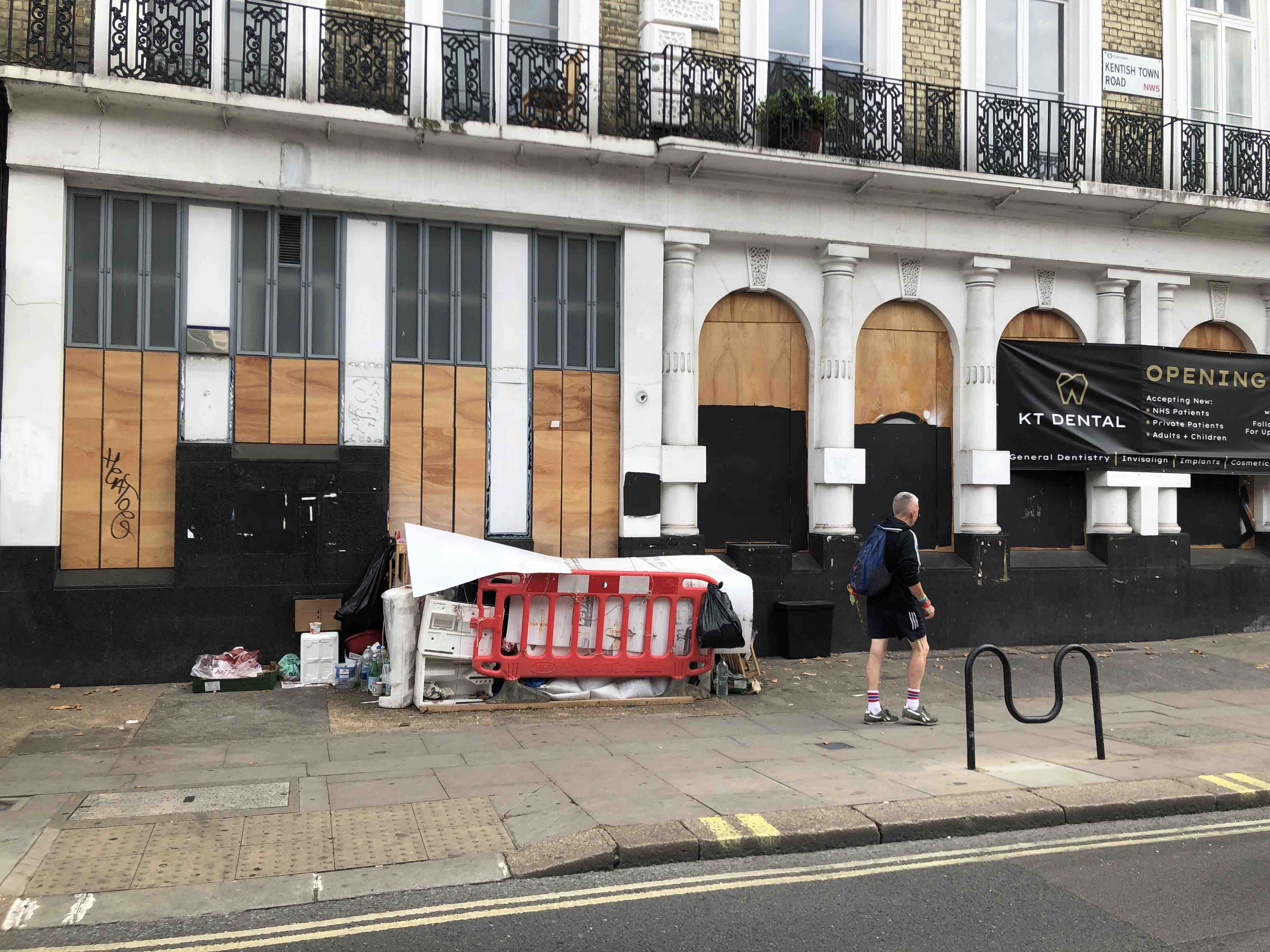More women rough sleeping, says ‘upsetting’ report on crisis
'We must recognise the unique challenges women face and create support systems that can simply address these need'
Tuesday, 2nd April — By Frankie Lister-Fell

The shelter once used by Lidia Venegas who died in Kentish Town last year
A “DEEPLY upsetting” report on women’s rough sleeping in Camden has been published. Women are less likely to be seen “bedding down” on the street than men, often because they are more at risk.
Instead, women are more likely to sofa surf, ride buses all night or sleep in stairwells. They also might not present to support services.
This means the full extent of the capital’s rough sleeping crisis is underreported, impacts how much funding councils receive and drives a lack of single-sex accommodation for women.
In 2022, the first women’s rough sleeping census was published, which uses a different “gender-informed” methodology to the standard street counts to record how many people face homelessness. The results for the 2023 census, produced by a coalition of leading women’s and homelessness organisations, including the Single Homelessness Project and Solace Women’s Aid, London Councils and the Greater London Authority, has now been published.
In Camden, there were 85 women recorded as rough sleeping from nine different services in the borough. There were 391 recorded acrosss London.
Eleanor Greenhalgh, Women’s Rough Sleeping Policy Manager at Solace who were involved in the project, told the New Journal: “The numbers are so much higher [this year], which is really significant. The more women we see, while that’s not good, because there are more women we know about being out there, it’s actually more of a confirmation of what we’ve thought.
“Women are less likely to be visible in that way. They might be sleeping in a stairwell. They might be walking around all night. They might be sitting in McDonald’s or on a train. Women tell us repeatedly how unsafe they feel. That lack of safety is one of the reasons why women are less visible. Because they’re making really sensible choices in relation to their risks but it puts them further away from services.”
She added that they still see a “huge lack of suitable accommodation for women” such as single sex hostels.
While in Camden there are options, including high-quality provision, other boroughs have none, she said. But the census could help that in the future.
Elodie Berland from Streets Kitchen said: “The census is an important tool, providing a small glimpse into the reality faced by thousands of women, giving us a fantastic opportunity to review a system in place that does not fulfil women’s needs. We echo the survey results’ findings calling for urgent changes that need to be implemented by all local authorities in how they treat women experiencing homelessness, particularly with the many flaws in the initial verification process.
“We must recognise the unique challenges women face and create support systems that can simply address these needs. It can be done and must be done urgently.”
Tom Kerridge, policy and research manager at Centrepoint, which started in Soho, said: “This is another deeply upsetting report backing up everything charities have been raising the alarm about.
“For years now, our research has shown how incredibly vulnerable young people are to family breakdown, so although distressing, it’s not surprising to see this as such a prominent reason young women are sleeping rough. “Women and girls sleeping rough in London are likely to be particularly vulnerable to abuse and other dangers.”
